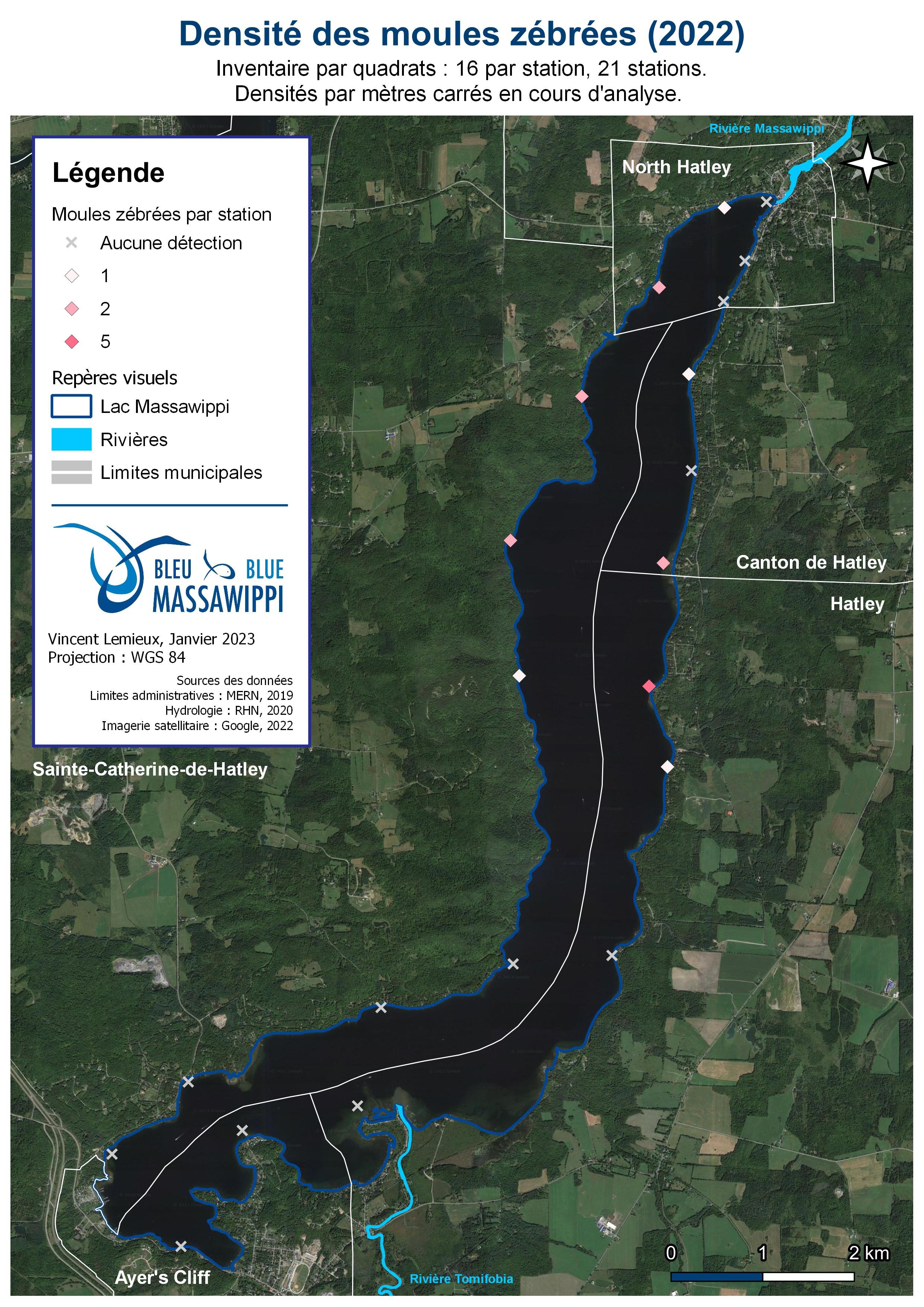
Monitoring zebra mussel density across Lake Massawippi
The establishment of zebra mussels can have a negative impact on a lake's native freshwater freshwater mussel population, as well as on the ecosystem as a whole. In 2022, a density inventory was therefore developed to better understand the rate of colonization of Lake Massawippi by this species.
Table 1. Summary of zebra mussel density monitoring operations for 2022 and 2023
-
Divers go to defined stations across the lake and randomly throw a 0.25m² quadrat into the water at a predetermined depth. They then count the number of zebra mussels present.
-
The main detection limitation of the quadrat methodology is that only a small area can be explored at each station. Thus, the presence of zebra mussels at particularly low densities may have escaped detection by this protocol. It is also possible that infestation outbreaks are concentrated in small areas, thus escaping detection.
-
In 2022, zebra mussels were detected only in the northern half of the lake, while in 2023, they had slightly spread southward. Monitoring in 2024 reveals the presence of zebra mussels throughout Lake Massawippi, with the exception of one station at the southernmost end. The reduced removal efforts in 2024, due to a lack of human resources, could partially explain the increase in zebra mussel density between 2023 and 2024. However, it is important to note that some population growth is expected due to the natural demographic expansion of the species.
A trainee holding a quadrat used for density surveys in Lake Massawippi.





